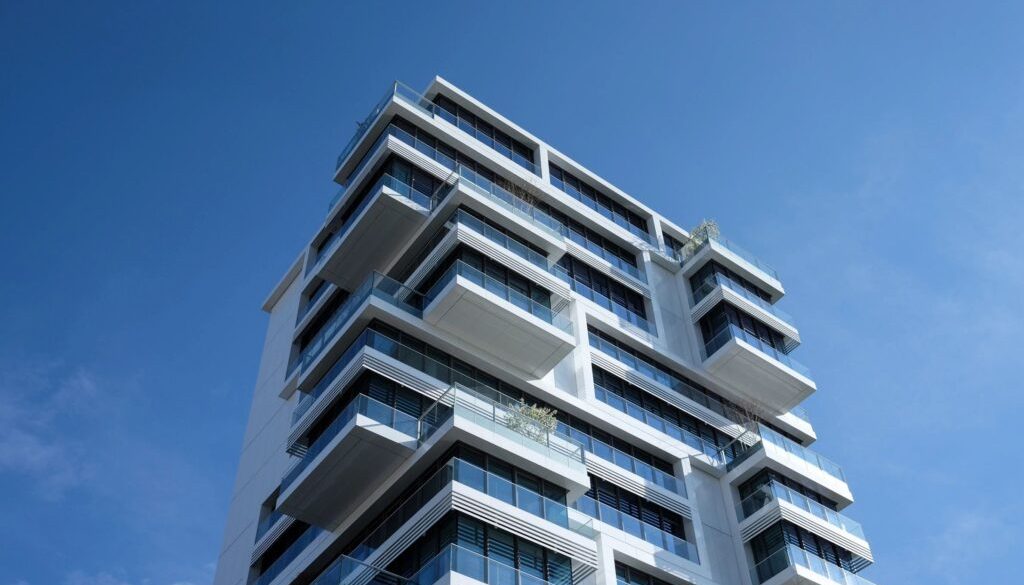How to Optimize Your Commercial Real Estate Listing
Optimize your commercial real estate listing to attract the right buyers and tenants. Discover essential strategies for creating an engaging and effective listing.
How to Optimize Your Commercial Real Estate Listing
When it comes to commercial real estate, the right listing can make all the difference. An optimized listing not only attracts potential buyers and tenants but also ensures that your property stands out in a competitive market. In this blog post, we will explore key strategies to enhance your commercial real estate listings, from capturing compelling visuals to writing persuasive descriptions that resonate with your target audience. We’ll discuss the importance of understanding market dynamics and leveraging digital tools to maximize your property’s visibility.
Introduction
With the commercial real estate market becoming increasingly competitive, optimizing your listing is not just an option; it’s a necessity. A well-crafted listing can significantly impact how quickly and profitably you sell or lease a property. In this comprehensive guide, we will delve into the essential elements that contribute to an effective commercial real estate listing. Whether you are selling, leasing, or managing properties, these strategies will help you showcase your property in the best light and attract the right audience.
Understanding Your Target Audience
- To create an impactful listing, start by identifying your target audience. Who are your potential buyers or tenants? Understanding their needs and expectations is crucial for tailoring your listing effectively.
- Consider factors such as their industry, the size of the business, and the specific requirements they may have regarding location, amenities, and property type.
- For instance, a tech startup might prioritize modern office spaces with flexible layouts, while a retail business could focus on high-traffic locations with significant footfall.
- Use surveys or market research to gather insights about what your ideal audience values most in commercial properties. This information will guide your listing strategies.
High-Quality Visuals: The Power of Imagery
- Visual content is paramount in attracting attention to your listing. High-quality photographs, videos, and even virtual tours allow potential buyers or tenants to envision themselves in the space.
- Invest in professional photography and videography that highlights the unique features of the property. Good lighting, diverse angles, and clear images can make a substantial difference.
- Consider including drone footage or 360-degree virtual tours, especially for larger properties. These immersive experiences enable viewers to explore the space remotely, increasing engagement.
- Additionally, ensure that the visuals align with the narrative you want to convey about the property. If the listing is for a modern office space, the images should reflect its contemporary design and functionality.
Crafting Compelling Descriptions
- The written description of your listing is just as important as the visuals. A compelling narrative can captivate potential buyers or tenants, highlighting the property’s unique selling points.
- Start with a strong opening statement that grabs attention. Follow this with details about the property, including square footage, layout, and any recent upgrades or renovations.
- Don’t just list features; explain the benefits. For example, if a property has energy-efficient systems, mention how this can reduce operational costs for a business.
- Use persuasive language and include keywords that your target audience is likely to search for. This increases the likelihood of your listing appearing in search results.
Leveraging Online Platforms for Maximum Exposure
- In today’s digital age, online platforms are essential for listing commercial properties. Websites like LoopNet, Zillow, and local real estate platforms can amplify your listing’s visibility.
- Utilize social media to promote your listings. Platforms like LinkedIn, Facebook, and Instagram are effective for reaching different demographics.
- Invest in targeted online advertising campaigns. Pay-per-click (PPC) advertising can help you reach specific audiences actively searching for commercial real estate.
- Make sure to optimize your listings for search engines by incorporating relevant keywords into your titles and descriptions. This will help potential buyers and tenants find your property more easily.
Highlighting Location and Accessibility
- Location is one of the most critical factors in commercial real estate. Your listing should emphasize the advantages of the property’s location.
- Include details about proximity to major highways, public transportation, and local amenities. Highlighting nearby businesses, schools, or government facilities can enhance the property’s appeal.
- If applicable, discuss the area’s economic growth potential. Provide data on local market trends, employment rates, and upcoming developments that could positively impact property value.
- Consider creating a map that outlines the property’s location and nearby points of interest. This visual aid can help potential buyers or tenants assess accessibility and convenience.
Providing Relevant Documentation and Transparency
- Transparency builds trust, which is essential in commercial real estate transactions. Include relevant documentation in your listing, such as floor plans, zoning information, and property tax details.
- Providing a comprehensive overview of the property’s financial performance can be beneficial for investors. Include metrics like net operating income (NOI) or tenant occupancy rates.
- Consider preparing a brochure or digital pamphlet that prospective buyers or tenants can easily access. This should summarize key information and showcase your property effectively.
Utilizing Professional Networks and Partnerships
- Networking is invaluable in commercial real estate. Leverage your connections to promote your listings beyond traditional advertising.
- Collaborate with local real estate agents or brokers who specialize in commercial properties. They can help you reach a wider audience and provide insights on market trends.
- Attend industry events, trade shows, and networking gatherings to meet potential buyers or investors. Word-of-mouth referrals can be a powerful tool in securing interest for your property.
- Engage with professionals in related sectors, such as construction or property management. These partnerships can lead to referrals and new listing opportunities.
Continuous Evaluation and Adaptation
- The real estate market is dynamic, and what works today may not be effective tomorrow. Regularly evaluate the performance of your listings and adapt your strategies accordingly.
- Monitor engagement metrics such as views, inquiries, and feedback from potential buyers or tenants. If a property is not attracting the expected interest, seek to identify the underlying issues and adjust your approach.
- Stay informed about market trends and shifts in consumer preferences. This knowledge can help you adjust your listings to meet changing demands.
- Consider conducting post-sale surveys to gather insights from buyers about their experiences. This feedback can provide valuable information for improving future listings.
Conclusion
In conclusion, optimizing your commercial real estate listing is essential for attracting the right buyers and tenants. By understanding your target audience, investing in high-quality visuals, and crafting compelling descriptions, you can create a listing that stands out in a crowded market. Leveraging online platforms and networking effectively will further enhance your reach and visibility. Remember, the key to success lies in continuous evaluation and adaptation of your strategies to stay ahead in the ever-evolving commercial real estate landscape. Ready to get started? Contact us today to explore how we can help you optimize your commercial real estate listings for maximum impact!



